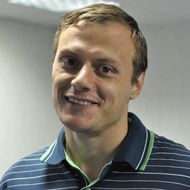‘The Goal of the Spring into ML School Is to Unite Young Scientists Engaged in Mathematics of AI’
The AI and Digital Science Institute at the HSE Faculty of Computer Science and Innopolis University organised a week-long programme for students, doctoral students, and young scientists on the application of mathematics in machine learning and artificial intelligence. Fifty participants of Spring into ML attended 24 lectures on machine learning, took part in specific pitch sessions, and completed two mini-courses on diffusion models—a developing area of AI for data generation.
The main topics of the scientific presentations were reinforcement learning, generative, and diffusion models.

Alexander Gasnikov, Rector of Innopolis University
‘The distinctive features of the Spring into ML school are its youthfulness and the strong fundamental component of scientific presentations. All lectures and talks were given by young scientists and researchers for equally active students, and most of the presentations were based on mathematics. It is wonderful that our university, which is one of the research centres in the field of artificial intelligence in Russia, became the venue for this scientific event.’
The published presentations (in Russian) can be found here.
The school programme also included such games as Name That Tune and What? Where? When?, movie screenings, excursions to Kazan, Sviyazhsk, and other networking events.

Alexey Naumov, Director for Basic Research at the AI and Digital Science Institute at the HSE Faculty of Computer Science
‘The goal of the Spring into ML school is to unite young scientists engaged in mathematics of AI. As a result of school discussions, several interesting projects emerged with the intersection of participants' competencies, which could lay the foundation for potential publications at A* conferences.’

Petr Mokrov, Skoltech (Skolkovo Institute of Science and Technology), participant of the Spring into ML School
‘The format and organisation of the school turned out to be suitable for such events. There are very few academic research groups in Russia working on machine learning and artificial intelligence. The participants know each other well, many became friends, but often they do not actually understand what their colleagues in adjacent teams are working on. Throughout the week spent in Innopolis, students, doctoral students, and academic supervisors communicated and exchanged experience, discussed their tasks, and addressed issues arising at the intersection between research directions. I found myself among like-minded people. And it was great.’
According to the organisers of the event from HSE and Innopolis University, the Spring into ML school can become a regular platform for discussion and exchange of experience among scientists and will launch a series of events in Russian IT universities dedicated to the mathematical foundations of artificial intelligence.
Innopolis University specialises in education, research, and development in the field of information technology and robotics. The Russian IT university collaborates with 297 industrial partners. The university's portfolio includes 114 projects for companies such as Gazprom, Aeroflot, KAMAZ, Norilsk Nickel, Rosseti, RusHydro, Severstal, and others. At Innopolis, there are 1,239 students from 35 countries as well as 152 scientific and pedagogical employees from 15 countries with working experience in leading world universities and IT companies.
See also:
HSE University to Reward Students Who Write Their Thesis Using AI
HSE University has launched a competition for solutions using artificial intelligence technology in theses work. The goal of the competition is to evaluate how students use tools based on generative models in their 2024 graduation theses (GT).
Production of the Future: AI Research Centre Presents Its Developments in Manual Operations Control Systems
Researchers from the HSE AI Research Centre have built a system for the automated control of manual operations, which finds application in industrial production. The system facilitates the process of monitoring objects and actions, as well as controlling the quality of their execution.
HSE and Yandex to Expand Collaboration in Training AI Specialists
Over the next ten years, the partnership between Yandex and the HSE Faculty of Computer Science (FCS) will broaden across three key areas: launching new educational programmes, advancing AI research, and exploring the application of generative neural networks in the educational process. Established by HSE University and Yandex a decade ago, the Faculty of Computer Science has since emerged as a frontrunner in training developers and experts in AI and machine learning, with a total of 3,385 graduates from the faculty over this period.
Researchers ‘Personalise’ the Selection of a Neural Network for Face Recognition on Smartphones
Researchers from HSE University in Nizhny Novgorod, MISIS and the Artificial Intelligence Research Institute (AIRI) have developed an algorithm that selects the best available neural network for facial recognition, taking into account the features of a mobile device. This new approach accelerates the selection of the most suitable neural network and allows the identification of people with an accuracy rate of up to 99%. The study was published in the IEEE Access journal. The source code is available on GitHub.
‘Bots Are Simply Imitators, not Artists’: How to Distinguish Artificial Intellect from a Real Author
Today, text bots like ChatGPT are doing many tasks that were originally human work. In our place, they can rewrite ‘War and Peace’ in a Shakespearean style, write a thesis on Ancient Mesopotamia, or create a Valentine’s Day card. But is there any way to identify an AI-generated text and distinguish it from works done by a human being? Can we catch out a robot? The Deputy Head of the HSE School of Data Analysis and Artificial Intelligence, Professor of the HSE Faculty of Computer Science Vasilii Gromov explained the answer in his lecture ‘Catch out a Bot, or the Large-Scale Structure of Natural Intelligence’ for Znanie intellectual society.
Neural Network Developed at HSE Campus in Perm Will Determine Root Cause of Stroke in Patients
Specialists at HSE Campus in Perm and clinicians at Perm City Clinical Hospital No. 4, have been collaborating to develop a neural network capable of determining the root cause of a stroke. This marks the world's first attempt to create such a system, the developers note.
AI Assists with Fact-Checking: HSE Scientists Streamline Information Verification
Specialists at the HSE AI Research Centre have developed an AI-powered fact-checking assistant. This software solution will improve the quality of working with information, reduce the risks of errors and biases, and save both time and resources. A notable advantage of the program lies in its capability to process a wide variety of statement types.
HSE University and Neimark IT Campus Sign an Agreement on Launching an AI Network Programme
HSE University, together with the world-class Neimark IT campus, is preparing a unique professional environment for future IT specialists: to this end, an IT school will be created in the Nizhny Novgorod region, and on September 1st, the first network degree programme ‘Artificial and Augmented Intelligence Technologies’ will be launched at HSE University in Nizhny Novgorod.
Software for Rapid Detection of Dyslexia Developed in Russia
HSE scientists have developed a software tool for assessing the presence and degree of dyslexia in school students based on their gender, age, school grade, and eye-tracking data. The application is expected to be introduced into clinical practice in 2024. The underlying studies were conducted by specialists in machine learning and neurolinguistics at the HSE AI Research Centre.
Russian Scientists Develop AI Algorithm for Faster Prediction of Earthquakes and Disease Outbreaks
Researchers at the HSE University AI Research Centre and Faculty of Computer Science have proposed a novel algorithm for detecting structural changes in time series. The method uses a neural network to compare various segments of a series, enabling rapid detection of changes in its behaviour. The results of their work have been presented at the 26th International Conference on Artificial Intelligence and Statistics— AISTATS (A*).


